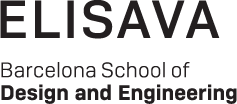May, 2018 – As part of the IMPACT THROUGH DESIGN: UN SDGSs and Societal Challenges SDGs Applied Design Reserach Program co-produced by SocialFare | Center for Social Innovation Italy and ELISAVA – Barcelona School of Design and Engineering, Arianna Mazzeo, Director of the MasterLab in Service Design Systems of ELISAVA, interviewed Joke Quintens.
IMPACT THROUGH DESIGN: UN SDGSs and Societal Challenges
SDGs Applied Design Reserach Program [read more]
Joke Quintens is a master in history and graduated on migration history. From different roles she has built a strong reputation in “making city together”, where everyone – citizens, activists, entrepreneurs, artists, scientists, politicians and civil servants – play a role in shaping a city and society together. As a designer and facilitator, Joke is extremely skilled in participatory design. As the former deputy mayor of the city of Genk (Belgium), she was an innovative policy maker in transitions at city level, in the areas of participation, neighbourhood development, sustainable development, environment and equality. For over 20 years, creativity and “working together to move forward” have been a focus in her career, both in the social sector, in policy and in her activities as an social entrepreneur.
Joke Quintens lives and works in Marseille since 2017, a city with a certain scale and 2600 years of experience in migration, diversity and resilience. In Living Lab Moving Marseille she uses the city as a lab to learn, but also to connect people and projects in and with Marseille. In this context she also organizes Urban Field Trips, in which she introduces visitors to this fascinating city with inspiring citymakers and their projects from the bottom-up. Joke Quintens is an experienced and driven “transitioneur”, “matchmaker” and “facilitator”, who likes to share her experiences with the rest of the world.
Joke has three main activities:
Living lab Moving*Marseille: how superdiversity can be an accelerator of transformations in Marseille. This is done by several interventions: a chain of stories from citizens about their roots and “routes”; citizentwinnings of citymakers from Rotterdam and Marseille; matchmaking social innovators in Marseille and beyond; collecting voices from Marseille in stories and inspiring places.
Urban Field Trips: in which visitors can learn from the bottom up initiatives in Marseille and her superdiverse population and visit local initiatives and meet citymakers who are building from the bottom-up their very promising city near the Mediterranean.
Participatory design: designing and facilitating participation and co-creation projects in cities, organizations and companies with a focus on bottom-up participation. This approach gives not only common ground but also better solutions.
Joke is also an inspiring speaker who wants to share her experiences and insights with the world. As a curator she designs and matchmakes for festivals and activities on social and sustainable change.
What had most impact on your life / did you learn from?
Realizing Wetopia exists. Wetopia is a word I invented to explain how we can take action to build our community together. Civilians, activists, artists, scientists, entrepreneurs, civil servants, policy maker. When people have little faith in politics, in the top down, it is necessary that we try to reshape our society together. Meanwhile people are already constructing Wetopia everywhere.
When you want transitions to work and systems to change, everybody has to be involved. Not only scientist and policy makers with their administrations. Everybody takes and can take responsibilities to accelerate transitions.
In Wetopia we see new alliances, also without government, al lot of regaining pride and self-esteem and the strength of a superdiverse community as main characteristics.
So let me tell you my personal story to explain what I mean with this:
I am a historian, graduated in migration history and started my career as a community worker in very mixed, but also deprived neighbourhoods in Brussels and Antwerp to strengthen people in their talents, in what they are good at. Then I decided to become a freelancer, an entrepreneur to facilitate organisations and cities in societal change. I got involved in policymaking, participated at local elections and became the deputy mayor of Genk. I developed from that role a lot of projects together with civil servants, associations, citizens about sustainable urban development in a working class and superdiverse community.
Today I live in Marseille, another superdiverse city, the most African city of Europe and focus on social design as an active citizen and as a professional. I set up an Urban Lab to research how superdiversity can accelerate a city and I organise urban field trips on social innovation from the bottom up.
And what do we always want, as engaged people? We want impact. We ask ourselves all the time how we can change things for the better. In every role. You can’t do it alone. To me it’s always about building bridges and focus on diversity as a strength. In all these kind of roles: from civil servant to scientist and from citizen to artist, we can make a difference.
Now, after more than 20 years, I decided to be a facilitator and a matchmaker helping people to make this difference.
I try to look at cities and society with different eyes and connect people and organizations who want to change their social and cultural environment for the better.
Choosing Marseille as a platform was a very conscious choice, because Marseille is the ideal laboratory to explore the possibilities of bottom-up initiatives in a superdiverse community. Our living lab Moving*Marseille explores these possibilities and tries to connect people and organizations who contribute to sustainable change.
Why impact through design in Marseille?
I am convinced that Marseille is a very interesting laboratory to research social impact through design and social innovation from the bottom-up. This, in the context of a city with 2600 years of experience with migration, a superdiverse working class population, a rebellious history, lots of social challenges – Marseille is the most unequal city in Europe – and a very active bottom-up community that explores new ways of activism and social change. This practice in a city as Marseille is due to an almost absent government in innovative social and sustainable solutions.
Let me share three examples of social innovation from Marseille that inspire me as Wetopian projects and are also very good examples of social design for societal change, addressing clearly the sustainable development goals.
The first social innovation, accelerating sustainable transformations, is Bernard du Bois. This is an empty temporary and legal occupied building from the national government as a hotspot to accommodate homeless people and to set up a new ecosystem with lots of partners to do this in a different way.
Lab Zéro is the laboratory of social innovations piloted by the Prefecture.
Marseille Solutions works with Lab Zéro to experiment solutions for social issues and intervenes in Bernard du Bois on the question of “zero non-recours aux droits”, using their rights.
Yes We Camp is in charge of the project and co-pilots it with Groupe SOS, in charge of the accommodation centre, and Plateau Urbain, responsible for renting the spaces for activities. They collaborate with initiatives of Belsunce’s social and cultural actors, like Centre Social Bernard du Bois, Cité de la Musique, Théâtre de l’Oeuvre.
And they work with residents, especially on the green aspect: on the roof of the building, the inhabitants will cultivate green to, once plants, disseminate to the inhabitants of the neighbourhood to vegitalise/green their streets even more than many in the neighbourhood already do.
In the future they want 50 structures to work on the site: companies, associations, all doing things in return for the target group.
Another example is Foresta. This parc was a not used piece of land on a for the sight strategic hill of Marseille, owned bij a company called Résilience. They invited Yes We Camp to use for at least 8 years the 20 ha / 50 acres land to do something attractive with it, meaning making a metropolitan park.
In Foresta, several kind of partners are involved. Next to Yes we Camp and Résilience some local associations dedicated to sport, culture, crafts, four community centres – Foresta is at the convergence of many priority areas – one cooperative of residents (Hôtel du Nord), some artists, urbanists (like Safi, Bureau des Guides..), the Technological Institute and a lot of inhabitants.
Last example is social innovation, working on the talents of the superdiverse community.
And in Marseille many companies take action to do their part of initiating projects and taking responsibilities for societal change.
Sylvie Bancilhon, the leading lady of Table de Cana, a catering firm set up, together with social innovation partner Marseille Solutions a project called “Des étoiles et des femmes” in which every nine months a group of women with lots of cooking talents can do an internship with a top and star chef. The impact of this journey is for those women life changing.
Christophe Baralotto, the owner of Provefarm, a pharma company initiated together with Marseille Solutions Dégun sans Stage, which means: not without internship. In France every 14 year old has to do an internship of one week in a company or other structure.
Youngsters from deprives neighbourhoods often have no network to find an internship. That’s why this company, located in a technopôle near the northern neighbourhoods of Marseille took the initiative to convince in the first year 60 entrepreneurs to provide internships. The 2018 goal is 500 places for the kids.
Another project is the bank LCL, headhunting young people in sport clubs of deprived neighbourhoods and providing education to become a bank advisor because this youngsters have a great team and competition spirit and a diverse background.
What the design community can learn from Marseille are the attitudes from the bottom-up to accelerate sustainable urban transformations, and doing so, generating impact. Some of these attitudes are for instance: look with new and different eyes, make new and different alliances and use this new and different energy. Experiment, disseminate and use the diversity of the community. See it big, start small, go fast, accelerate optimism, don’t wait, act now, and do it together.

